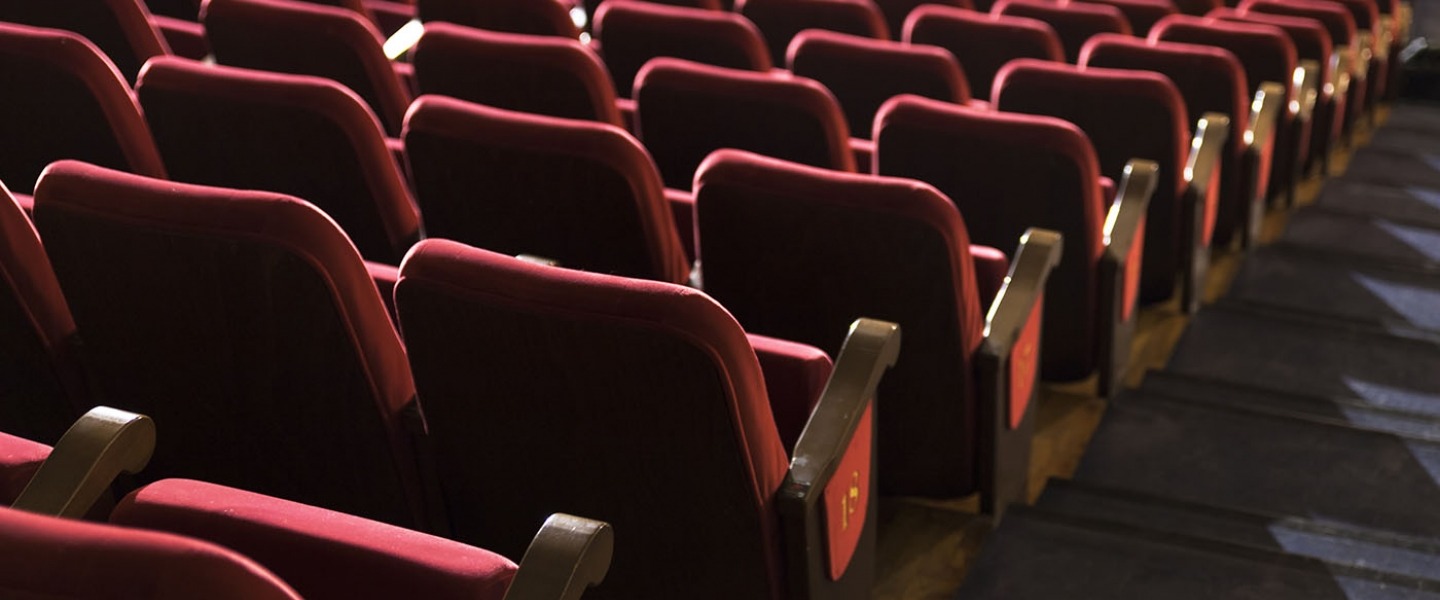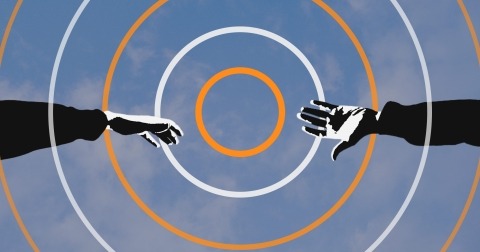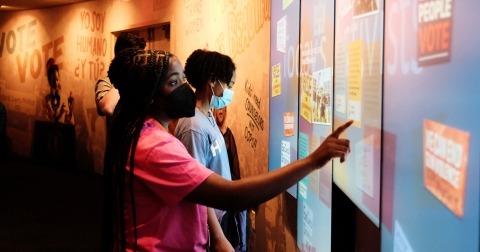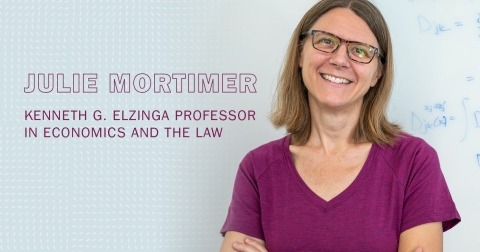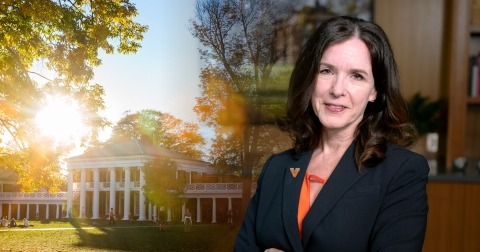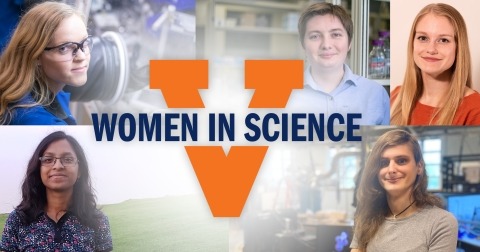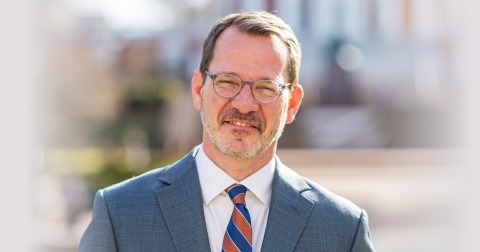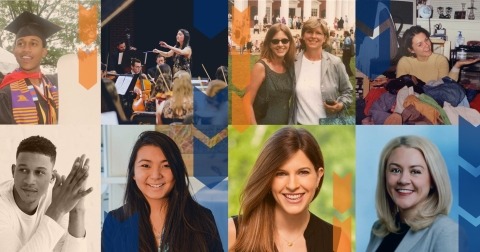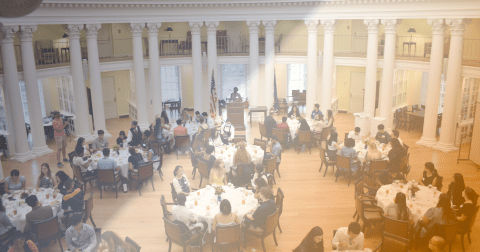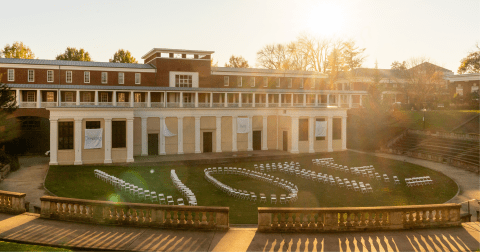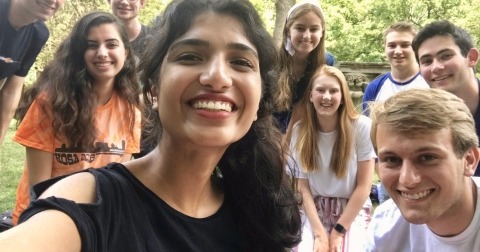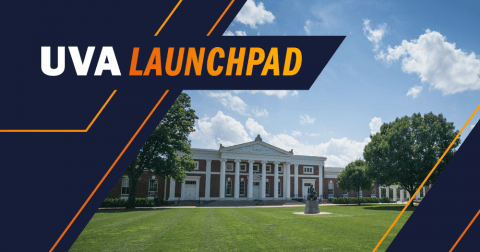Since the outbreak of the COVID-19 pandemic, university faculty have scrambled to find ways to deliver a traditional college education online. While the transition wasn’t easy for anyone, it has been especially difficult for those in the fine arts.
For actors and musicians the experience of performing together in person is an essential part of their education. For painters, printmakers, photographers and filmmakers, limited access to studios, darkrooms and essential equipment posed obstacles to creativity. Sculptors and dancers struggled to find alternatives to the experience of engaging with three-dimensional art while learning in a two-dimensional space.
But as faculty in the College and Graduate School of Arts & Sciences adapted to the virtual environment, they found themselves creating the foundation for changes that could make art education even better than it was before.
Art in the Age of the Internet
Lydia Moyer is a studio art professor in the Department of Art. She teaches courses in new media where students use video and animation as vehicles for expression.
Moyer’s classroom teaching already relied on interactive experiences for her students that involve collaborating to solve problems and to learn the software that new media artists use to make art. But the leap to an all-online format presented the challenge of providing technical support to students who relied wholly on technology as they worked remotely. The responsibility for solving technical problems fell more on the students’ shoulders than Moyer would have liked, but it added a new dimension to the classroom experience.
“It really forced them into a mode of operating that was much more like a professional artist,” Moyer said. “It was a crash course in being your own computer technician.”
Rather than worrying about the equipment and resources she might have had access to in a normal year, Kim Salac, a student of Moyer’s who graduated last spring with a double major in studio art and computer science, saw the situation as an opportunity, rather an obstacle.
“It empowered me to think about art-making in a way that doesn’t involve needing fancy materials,” Salac said. “I think it gave me a new perspective about approaching art by prioritizing what we have to say over how many fancy things that we can learn how to use. It brought me back to the basics in a way that I cherished.”
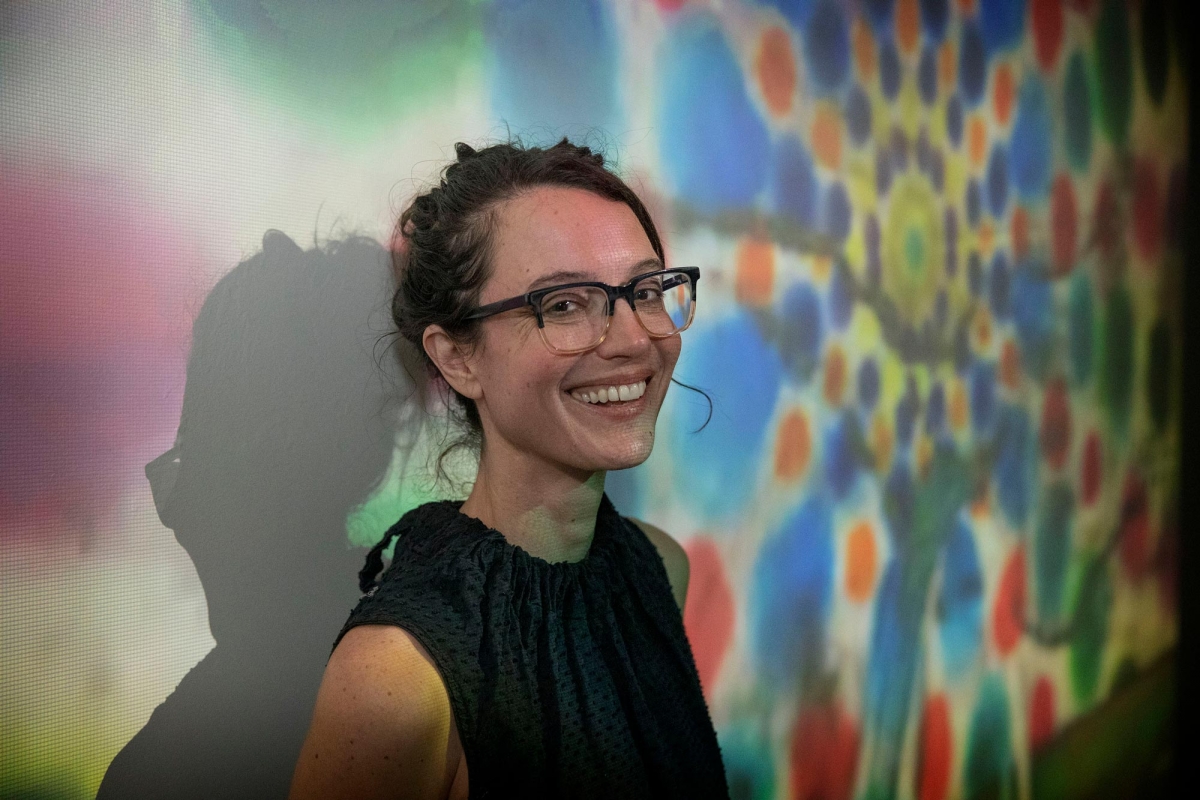 Studio art professor Lydia Moyer relied on interactive online experiences and software used by new media artists. (Photo by Dan Addison, University Communications)
Studio art professor Lydia Moyer relied on interactive online experiences and software used by new media artists. (Photo by Dan Addison, University Communications)
As a video artist herself, Moyer spends much of a typical year traveling to festivals where her work is screened and where she can see the work of other artists using the same medium. During the pandemic, however, as many festivals where video artists screen their work moved online. Moyer and her students had the opportunity to see work from all over the world without the challenges that typically come with travel, especially for those faced with accessibility or cost concerns. Moyer doesn’t view online festivals as a replacement for the real thing, but the pandemic could transform the festival experience for the better.
“I think it will probably change things,” Moyer said. “Some festivals may keep an online component. There has also always been a sense that online festivals are lesser than in-person festivals, but this year there was no choice, so maybe in some ways those values will change.”
Moyer thinks the pandemic also gave students an appreciation for the creative considerations of making artwork in an internet-dominant world. Students spent the year creating art without an opportunity to present it to their peers and professors in a traditional gallery space, which has always been important for visual artists. But “Post-Internet Art” is made with the expectation that the visual language of social media will play an essential part in how people engage with it. Understanding that concept could become as important for future artists as the materials or methods they use to create their work.
“The number of people who are going to see the work in person is often much smaller than the number of people who are going to see the images of the work on the internet, and so it can be as important – if not more important – to have good pictures as it is to have work that looks good in person,” Moyer said.
A New Take on an Ancient Dramatic Tradition
The pandemic was uniquely challenging for students learning the craft of acting. But in some ways, the experience wasn’t entirely unprecedented.
Colleen Kelly is a professor with the Department of Drama and director of UVA’s MFA Professional Actor Training Program. She also supervises graduate students who are teaching acting to undergraduates in the program’s “Acting I” course. One of the biggest problems she and her graduate students faced was finding a way to teach fundamentals of acting, like voice and movement, online.
Using virtual conferencing applications like Zoom wasn’t an ideal substitute for in-person experience, but Kelly said that the skills students have learned about communicating with each other online will help prepare them for life after college.
“I think the support we gave our undergraduates in ‘Acting I’ gave them experience that may help them down the road with their communication skills and their confidence in job interviews,” Kelly said. “Having a presence in Zoom meetings and being able to not just speak into a camera, but to be able to use vocal range and tone to be clear about what it is they want to say, will support them in whatever they’re going to end up doing, whether it’s online or in a live meeting.”
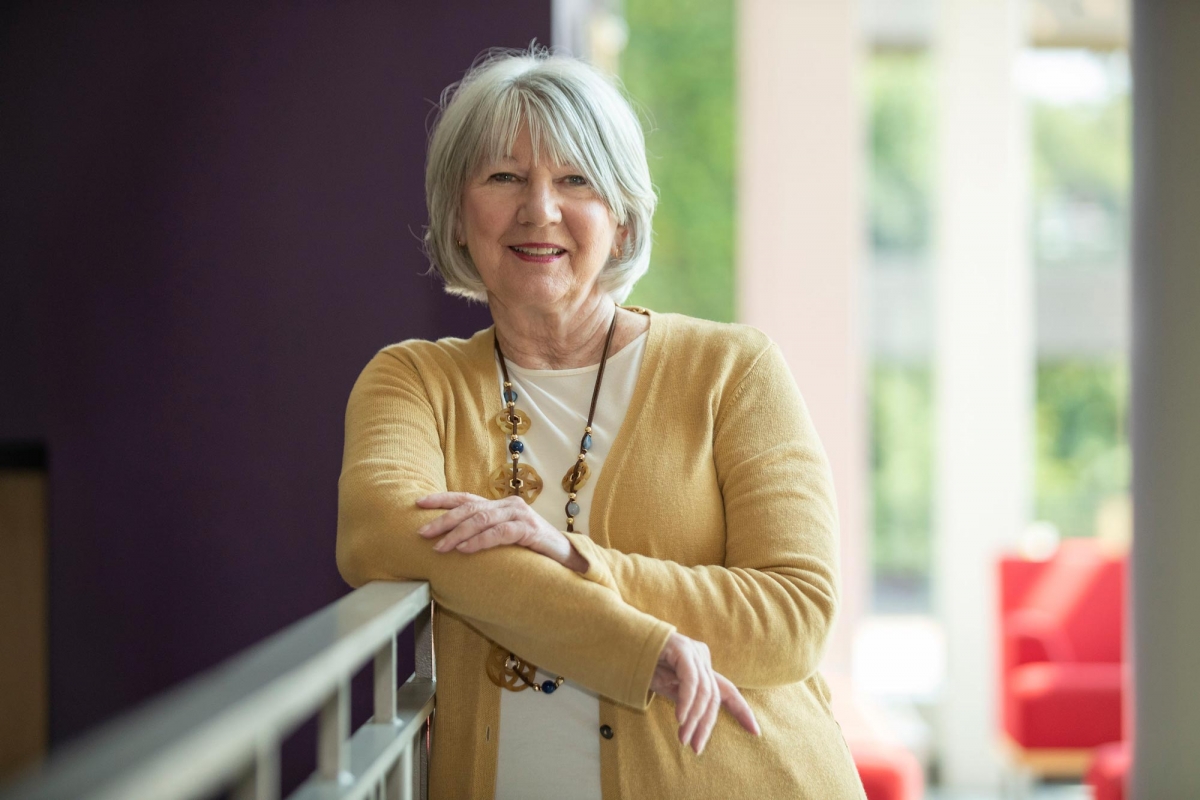 Drama professor Colleen Kelly used the challenges posed by the pandemic to explore new ideas about acting. (Photo by Dan Addison, University Communications)
Drama professor Colleen Kelly used the challenges posed by the pandemic to explore new ideas about acting. (Photo by Dan Addison, University Communications)
Kelly’s approach to teaching, which involves making the best of the circumstances, has also served as an example of the role the arts can play in helping deal with challenge and adversity. In the spring of 2021, when they could have settled for less ambitious projects, she and her graduate students chose to perform the plays “Death of the Author,” by Steven Drukman, and “God of Carnage,” by Yasmina Reza, translated by Christopher Hampton. Both were performed live on the Culbreth Theatre stage, performed with no audience and in masks, with actors maintaining safe physical distancing. The plays were recorded for broadcast.
“We embraced the idea that these characters are living today, in this time. We were not going to pretend that the characters were not masked, and that was an interesting process,” Kelly said. “As actors you have to make choices. Allowing the characters to deal with the distance between themselves on stage and to deal with the absence of exchanging breath taught us a lot about how characters can make choices in a moment under any given circumstances.”
According to Jack Clifford, a graduate student in his second year of the MFA program in acting and a member of the cast of “Death of the Author,” the experience provided additional depth to his role.
“It made us think a lot more about physicality, the physicality of what we had to do as characters. We had to think about that more,” he said. “When you’re on stage, your face is 10% of what tells the story.”
And the idea of wearing a mask is not new for actors.
“The mask is part of the theatrical tradition,” Kelly said. “It’s part of ritual and storytelling, and the theatrical idea that a mask can conceal something about yourself, but it can also reveal something about yourself and can give you permission to say things or do things that might be a little bit out of character. Watch any kid become a superhero on Halloween, you know?”
Making Music Mean Something More
With performance venues closed and group rehearsals an impossibility, music faculty were creative in finding virtual equivalents for choral and symphonic rehearsals, replacing recitals with live recordings, and preparing their students to use the technology necessary to make those things happen. Learning to accommodate individual student needs brought a new perspective to teaching, and students flourished in unexpected ways.
When the University’s Rap Lab, a community space that includes a fully functional recording studio, closed abruptly in the middle of 2020’s spring semester, A.D. Carson, professor of hip hop and the Global South, was in the middle of teaching “Composing Mixtapes,” a course that gives students the opportunity to collaborate on writing, recording and producing a full-length rap album. Carson uses the course to teach students about how music can have a positive impact on people and their communities.
By spring break, his students were on track to finish their album and were already looking forward to hosting a record-release party in just a few months. Days later, UVA President Jim Ryan’s announcement that in-person classes would be cancelled for the rest of the semester to help combat the spread of COVID-19 left Carson and his students in shock. At first, Carson lowered his expectations for the class, but his students responded by letting him know that they not only wanted to finish the project, but they also wanted to use it to raise money for those struggling with food insecurity in Charlottesville.
“I was blown away by their commitment to not just finishing the project, but to making the project be of service to others,” Carson said. “Maybe it doesn’t really affect them as much to not be in the same physical space because they are so used to inhabiting these digital spaces, but in a lot of ways their work got better because they were determined in a way that they weren’t before. After we came back from spring break, they were absolutely laser-focused, and in some ways, I believe, they became a closer group because of it.”
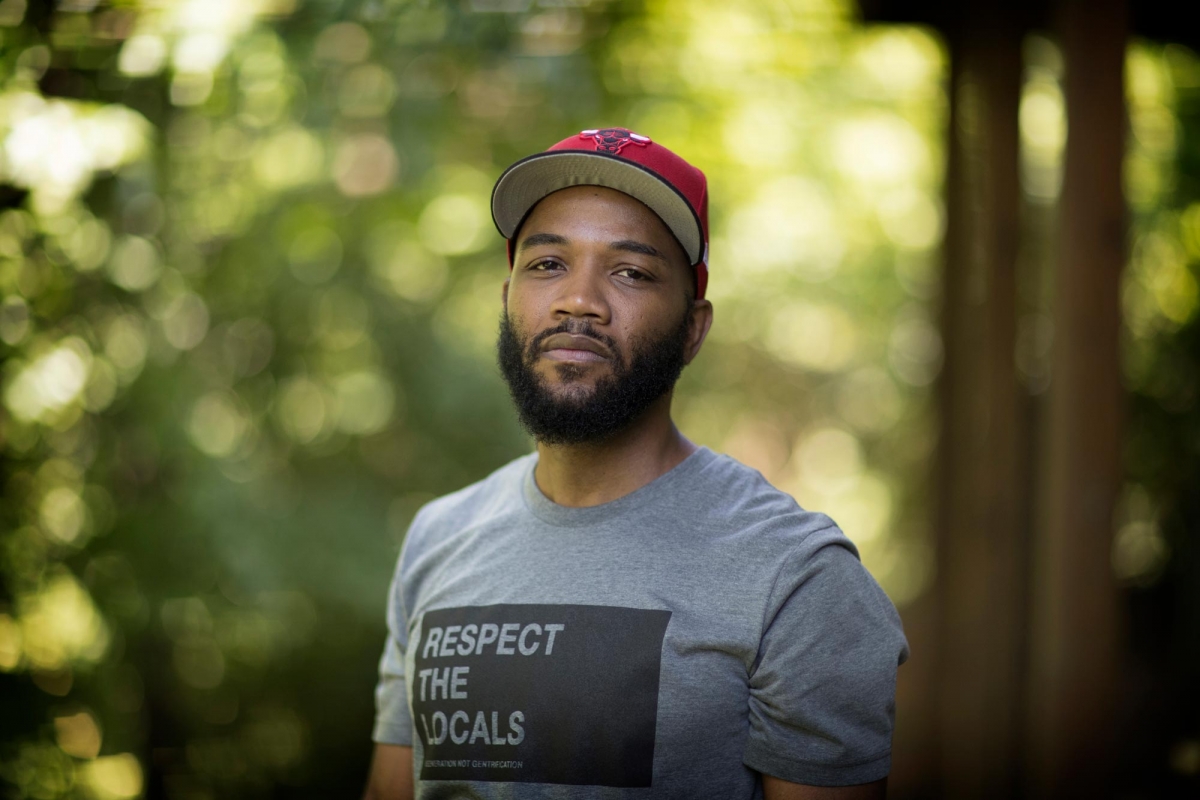 Students in A.D. Carson’s Rap Lab were able to collaborate virtually and complete their class album from home. (Photo by Dan Addison, University Communications)
Students in A.D. Carson’s Rap Lab were able to collaborate virtually and complete their class album from home. (Photo by Dan Addison, University Communications)
Nia Williams, who graduated in May, took Carson’s class because she wanted an opportunity to learn some of the technical skills she would need as a musician and songwriter. Going into the class, she had a difficult time collaborating with other musicians because of the vulnerability it can require. Faced with the challenge the pandemic suddenly presented to her and her classmates, her perspective changed.
“We worked really hard to come together and figure out how to make this not just about us in the middle of a global pandemic, and I think that was a really cool thing,” Williams said.
With his students spread from one coast to the other as they worked together to produce an album and plan and organize both a virtual record-release party and a fundraiser, Carson reflected on how teaching during a pandemic may have a lasting impact on the idea of accessibility in education.
“There are lots of times when instructors are asked to make accommodations, and the resistance is that if I make these accommodations now, then I would always have to be accommodating,” Carson said. “I think we can throw that out the window now. We are definitely capable of making the accommodations that need to be made. We know it’s not impossible because so many of us did it, and maybe it’s not the worst thing in the world to be flexible in those ways moving forward. I think that’s something that we should all hold onto.”

